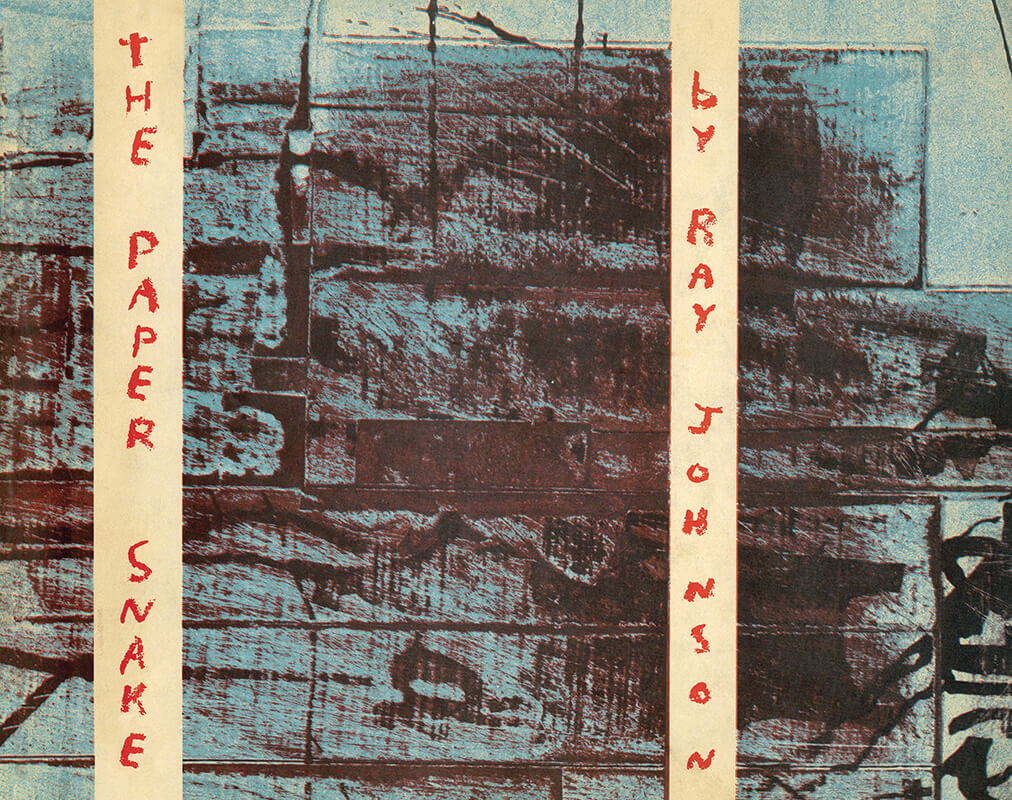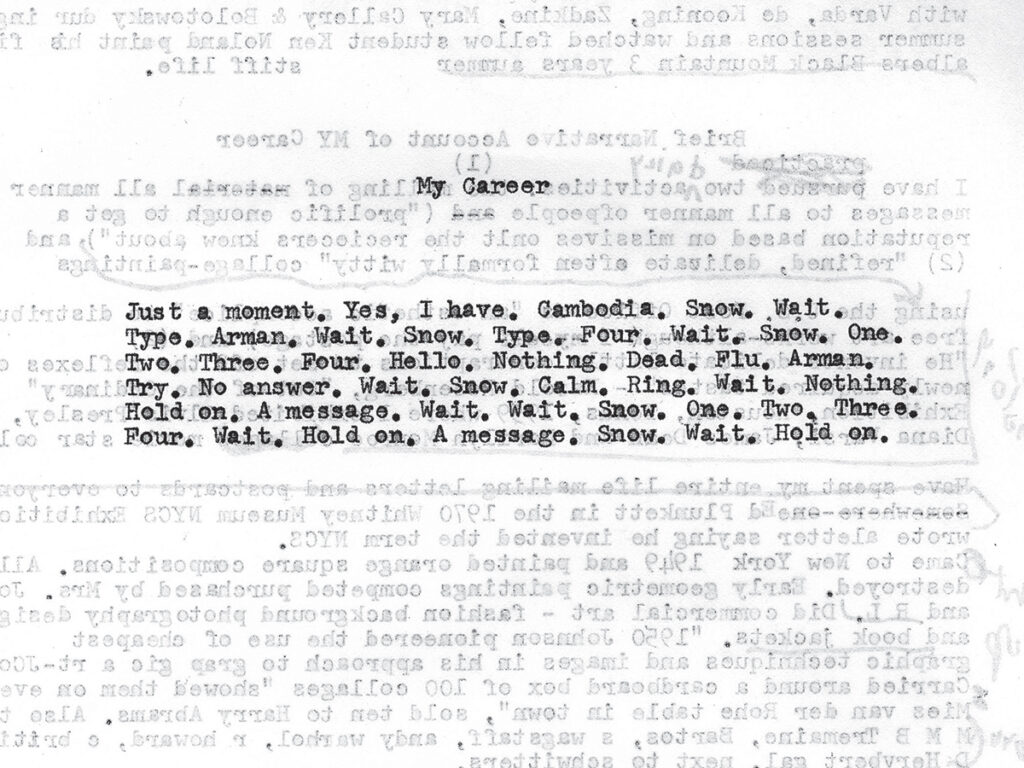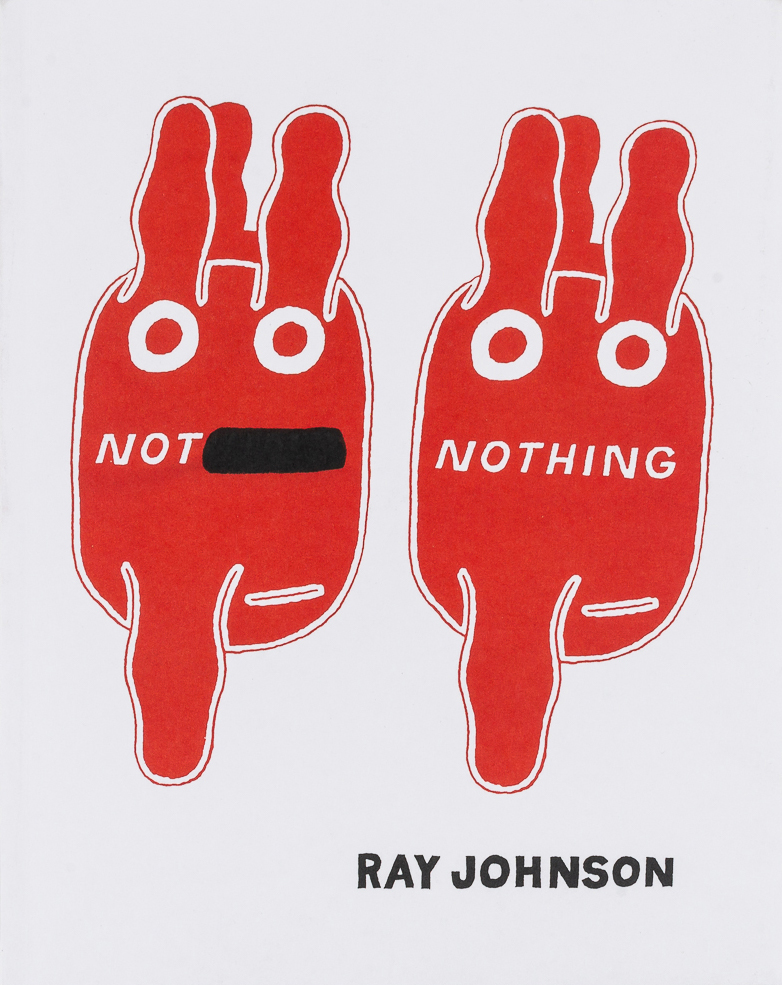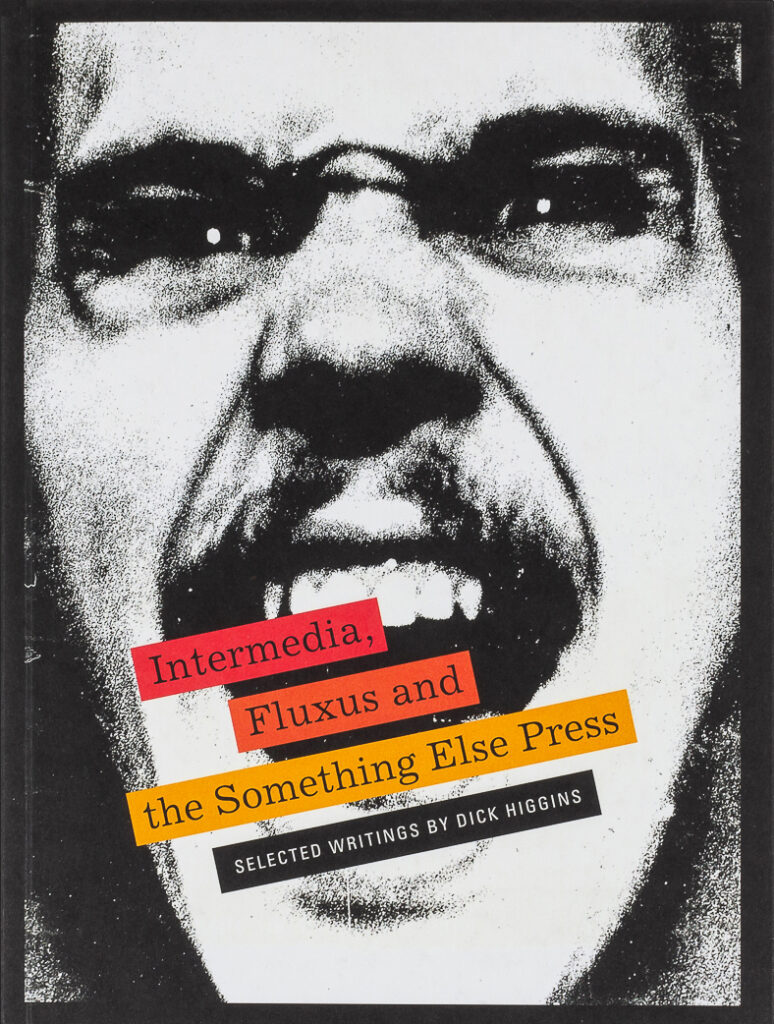Frog Pond Splash
Ray Johnson, William S. Wilson
Edited by Elizabeth Zuba
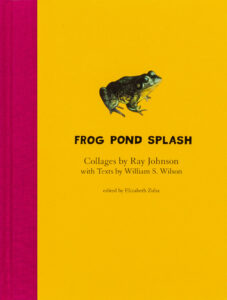
use code “turnthepage” for 15% off this title through 1/31
hardback 5.5 × 7.25 in.
88 pages, all color
978-1-938221-27-9
published in 2020
very low quantity
The artist Ray Johnson (1927–1995) and the writer William S. Wilson (1932–2016) were decades-long friends — soul mates really is the word — and comparably skilled acrobats of images and words. This lovely little book pairs well-known collages by Johnson, the inventor of Mail Art, with little known writing on him by Wilson, and it’s a serious pleasure, just the thing to light up a dark-early, late-year night.
—Holland Cotter, New York Times
Dubbed “Ray Johnson’s Boswell,” writer and logophile William S. Wilson was one of legendary artist Ray Johnson’s closest friends and biggest champions. He was also perhaps Johnson’s most trusted poetic muse and synthesizer of referents and references. The influence was mutual: throughout their lifelong friendship, begun when both men were in their twenties, writer and artist challenged and enriched one another’s work.
Frog Pond Splash intends to suspend and magnify their relationship as well as provide an intimate portrait of the fractured, disappearing Johnson that only Wilson could render, through an also diffuse lens. Editor Elizabeth Zuba (Not Nothing: Selected Writings by Ray Johnson, 1954–1994) has selected collage works by Johnson that span the many stages of Ray’s work in his almost forty years of friendship with Wilson “ordered not by chronology, but by their own morphogenetic correspondence”* and paired with short, perspicacious excerpts of texts by Wilson (from both published and unpublished writings including Wilson’s manuscript on Ray Johnson). These juxtapositions do not explicate or illustrate; rather, they form a loose collage-like letter of works and writings that allow the reader to put the pieces together, to respond, and to add and return to the way Johnson required of his correspondents and fellow travelers.
Taking its title from Wilson’s haiku equivalence of Johnson’s process, Frog Pond Splash is a small book but many things: a collage-like homage to their friendship, a treasure chest of prismatic “correspondances,” as well as a satellite to the exhibition of Ray Johnson works from Wilson’s archive at the Art Institute of Chicago (Ray Johnson c/o). Zuba’s nuanced selection and arrangement of images and texts in this sumptuous little volume honors Johnson’s “‘open system,’ an undefined surface of indeterminate immediacies and immediate indeterminacies (and the rejection of any closed or consistent meanings, codes, language, or sequence)”* in its associative and intimate playfulness, and in its gem-like refractions.
about the authors
Make room for Ray Johnson, whose place in history has been only vaguely defined. Johnson’s beguiling, challenging art has an exquisite clarity and emotional intensity that makes it much more than simply a remarkable mirror of its time, although it is that, too.
—Roberta Smith, New York Times
RAY JOHNSON (1927–1995), continues to be revealed as one of the most quietly consequential figures in American contemporary art. An influential pioneer of Pop art, Conceptual art and Mail art (though he eschewed all of these monikers), Johnson’s extrasensory perception and insatiable curiosity resulted in an immense body of work that spans collage, correspondence, performance, sculpture, drawing, painting and book arts. A graduate of Black Mountain College (1945-48), Johnson also created an alternative network of collaborative art known as “The New York Correspondence School” in 1968, and is considered the founder of Mail Art. Despite sharing major exhibitions between 1957-1978 (with the likes of Duchamp, Jasper Johns, Robert Rauschenberg, Allan Kaprow and Andy Warhol, among others) as well as having important solo shows at major galleries and museums (such as at The Whitney in 1970), Johnson systematically refused or flouted most opportunities to popularize his work through mainstream art commerce. On January 13, 1995 Johnson leapt from the Sag Harbor bridge in Long Island in an apparent suicide.
WILLIAM “BILL” S. WILSON (1932−2016) was an American writer, novelist, art critic, and teacher. One of Johnson’s closest friends and most important critics, Wilson’s criticism on numerous artists (Mel Bochner, Eva Hesse, Alison Knowles, Claes Oldenburg, Nam June Paik, Jackson Pollock, Robert Rauschenberg, Paul Thek, Andy Warhol, his mother May Wilson, and, chiefly, Ray Johnson) was published widely in monographs, catalogs, and in journals and magazines including Art in America, Artforum, ARTnews, and The Paris Review, among others. Born in Baltimore and a graduate of the University of Virginia (BA) and Yale University (PhD), he taught English at Queens College for over thirty years, and art history at Cooper Union, School for Visual Arts, and Columbia University. His formidable collection of Johnson collages and related archives are now housed in the Art Institute of Chicago.
about the editor
ELIZABETH ZUBA has edited or translated several books of artists’ writings including My Ogre Book, Shadow Theater, Midnight by Marcel Broodthaers, Not Nothing: Selected Writings by Ray Johnson, 1954-1994, and Ray Johnson’s Art World (Feigen & Co.) She is also the author of two works of poetry.
*Quotes above from her afterword.
press
In modelling the techniques of Johnson’s associative and collaborative methods, shot through with Wilson’s astute, probing writing, the handsomely bound volume furnishes an understanding of the deep artistic rapport that the pair sustained over more than 40 years of friendship.
—Tausif Noor, Frieze
[Wilson’s] analytical intellect found unforeseen but welcome trial in Johnson’s synaptic leaps. As the book’s title suggests—it’s an extreme condensation of a poem by Bashō—Johnson’s “ideogrammic method” (to borrow Pound’s phrase) as a collagist had something in common with the technique of haiku, where the abutting signifiers open up what Andrea Zanzotto called “abysses, as unfathomable and inscrutable as they are irresistible,” or as Bill puts it, “the feeling…of trapdoor after trapdoor opening, and of me falling through into reality.
—Barry Schwabsky, Tourniquet Review
related
Call It Something Else, an exhibition about Dick Higgins’ Something Else Press, is open at the Reina Sofia Museum in Madrid through January 22, 2024. Dick Higgins published Ray Johnson’s The Paper Snake.
see also
✼ news:
“Hybrids of art and text that don’t respect boundaries but deal in the frisson created when collage cross-pollinates with fiction, poetry speaks through photographs, graphics accesses emotion the memoir can’t, and paintings remember what history forgets.” —Elissa Schappell writing about Siglio for Lithub.
[...]